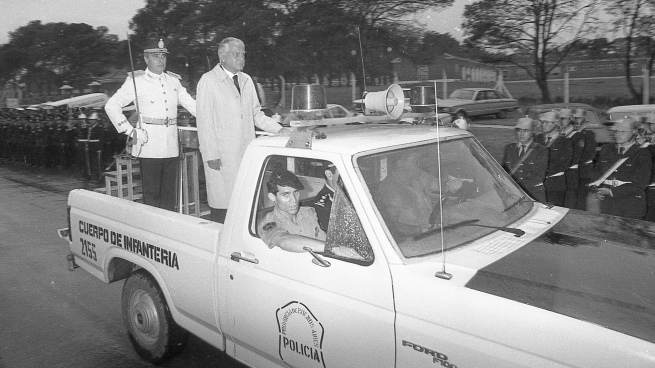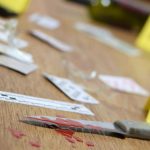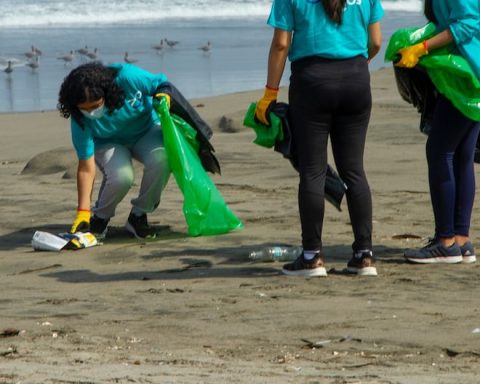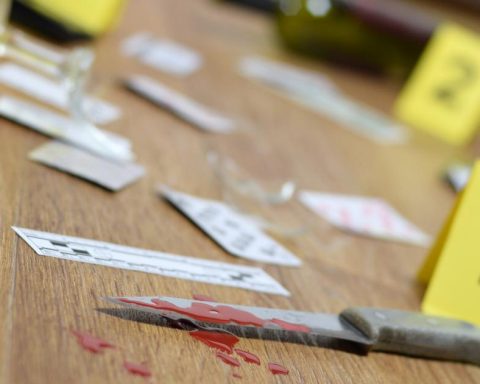100 years since the birth of Antonio Cafiero that are fulfilled this Monday will summon Peronism to review, among the tributes of rigor, the experience of government in the province of Buenos Aires between 1987 and 1991, a period in which the government faced one of the great problems inherited in the security area of the dictatorship: how to lead the largest police force in the country without allowing it self-government.
The dilemma that Cafiero had to deal with then is still valid today, but in 1988 it broke with tension from a quartering initiated by a strange failure in the computerized liquidation of assets but that had as its background the discontent over the purges of commissioners with a history of human rights violations.
Another element that contributed to the conflict was the discomfort generated among the commanders of the force by the institutional support for the investigation of trigger-happy cases.
for the lawyer León Arslanian, excamarista of the trial of the Juntas and who twice held the security portfolio in the Buenos Aires district (1998-1999 and 2004-2007), the measures that Cafiero proposed to apply in 1988 with the encouragement of his then Minister of Government Luis Brunati show “coincidences” with the package of reforms that he would promote ten years later.
In a dialogue with Télam, Arslanian considered that both Brunati and himself -and also Juan Pablo Cafiero, Antonio’s fourth son- had at different times a common feature in the public management of security, the conviction that “the need to have a democratic police, the police of a democratic State of law that respects the law, the political leadership and the institutional framework,” pointed out.
“Brunati was an excellent minister and he had, by the way, a political decision and a political idea to redirect a police force that was without a government, or a self-governed police force such as the police of the province of Buenos Aires at that time. In that sense, he took conducive, important measures, so I rescue that,” said Arslanian about the work carried out in the first stage of the Cafiero administration.

On September 6, 1987, after the victory over the radical Juan Manuel Casella in the gubernatorial elections, Cafiero – the main referent of the so-called Peronist renewal – had to elect his Cabinet.
Brunati, who had been elected deputy, was first entrusted with a task that was unsuccessful, convincing Ana Fasce, wife of Christian Democrat leader Carlos Auyero, to take over as general director of Schools.
The surprise came later: the governor-elect offered him to be Minister of Government of the province, which meant directing a portfolio “that encompassed what later became several ministries”, as Brunati himself recalled in dialogue with Télam.
And he explained that the offer included “the greatest freedom to make appointments, except for the Ministry of Justice, which was committed to (the Peronism of) La Matanza.”
Brunati was at that time a Peronist leader with a combative profile, with territorial work in the western area of the suburbs and who, after the defeat of Lúder and Herminio Iglesias in 1983, had confronted union orthodoxy in the Buenos Aires Legislature.
“Cafiero was clear and confirmed that I had never belonged to Montoneros, but the truth is that I was always part of the Tendency, to put it in some way; it is also true that I recognize the priest Jorge Galli (one of the founders of the JP Lealtad ) as one of my main references, and that a large part of my friends and colleagues did belong to Montoneros,” Brunati said in dialogue with this agency.
The political profile of the man whom Cafiero appointed to the government portfolio was not a minor fact in the mid-1980s, because at that time “the theory of the two demons was still in full force,” Brunati observed.
After the appointment, the brand new minister completed the organization chart with the lawyer Orlando Caporal as Undersecretary of Security and the lawyer María Elena Murguiondo as Secretary of Government: Carlos Kunkel was also on that team, years later an official of Néstor Kirchner.
As in December 1987 The Ministry of Security, the control of the Police and the Buenos Aires Penitentiary Service did not exist –together with the political guidelines to combat crime- They were under the purview of the Ministry of Government.
In this key aspect of the administration, Brunati implemented a series of reforms with the approval of Cafiero that consisted of “removing a large number of general commissioners, but not out of animosity but to place (in command of the force) someone unconnected of the dictatorship,” he said.
In this task, he ignored the suggestions of a group of PJ mayors who had their own candidates for chief and deputy chief.

Other initiatives carried out were the institutional push for easy-trigger investigations (in May 1987 the Ingeniero Budge massacre had taken place and the issue was at the center of the agenda, with a police force that showed continuities with the force that had commanded by Ramón Camps), the beginning of the Women’s police stations and the creation of the Olmos program, which with Lisandro Olmos’ Unit I as a model proposed innovations for the lives of prisoners in Buenos Aires prisons.
In this project, Brunati had the enthusiastic support of Ana Goitia de Cafiero, the governor’s wife, but also “of Inés Williams, wife of Abel Fleitas Ortiz de Rozas; of Amalia Zille, wife of Mario Cafiero; of Teresa Parodi and my partner, Clara Segesdi,” recalled the then minister 34 years after those events .
On the other hand, when taking stock of his work, he remarked that his work “never had the slightest hostile orientation towards the police.”
Brunati’s performance ran into an episode in June 1988 with a great impact on the media that was traumatic for the Cafiero government: the Buenos Aires police were quartered, with the trigger of an inconvenience in the payment of salaries but that in the future of the conflict was extended to a 12-point petition.
The agents paralyzed their tasks and concentrated in front of the Central Police Department, to the cry of “the police, united, will never be defeated”, while accompanying a list of claims that would endure over the years, with other efforts.
They asked for salary equalization with the Federal salary, better equipment and ammunition, fuel availability, payment for additional hours without limitations and the advancement of a housing plan, but also controversial demands such as the prohibition of contact with detained civilians in certain circumstances.
The most difficult moment of the quartering, which had not been the first and would not be the last in the history of the Buenos Aires Police, occurred when Brunati himself, his private secretary Mario Barboza and the governor’s son Mario Cafiero entered the Department in a vehicle. Central.
Once inside, they found that a Penitentiary Service truck was blocking their exit.
“It is very difficult and extensive to explain what happened inside the police headquarters when we were held. Things there were settled at gunpoint. The governor’s son, my private secretary and I had to walk back from the Central Department to Government House. The cars were returned to us the next day,” Brunati rebuilt at the request of this agency.
And in a previous interview, granted in 2004 to the newspaper Página/12, he mentioned the accompaniment of Mario Cafiero in that emergency situation, which he valued “on a human level, of friendship, because of the physical risk” that it implied.
The police uprising, Brunati continued, ended “when one of the senior staff says to another, putting the gun to his head: ‘Disarm this because I’m going to shoot you.'”
Another of the governor’s sons, Juan Pablo Cafiero, would later be Minister of Justice and Security of the province of Buenos Aires (2002-2007).
From the beginning, this criminal lawyer set out to complete the reform of the provincial police that Arslanian had promoted in the second government of Eduardo Duhalde.
When reviewing his management at the head of an area that is still key, Cafiero acknowledged that he could not lower the levels of insecurity that existed in the province, “so I can only have a self-criticism of what my role was,” he responded to the consultation of Telam.
In more detail, he highlighted other decisions he made at that time, such as the creation of the VAIC, a novelty for the Scientific Police that involved a large investment and that allowed “providing both the police and the justice system with investigative tools”; he also valued “the care of police personnel from a human and professional perspective.”
This last point led to the end of the tradition that officers were obliged to act in civilian clothes, a regulation deeply rooted in the culture of the police that “all it did was generate police victims,” said Juan Pablo Cafiero.
He also recalled the advances he attributed to his management “in the fight against illegal disarmaments”.
In this way, and already in the administration of Felipe Solá, Juan Pablo Cafiero intervened in one of the most sensitive issues of Buenos Aires politics, the same issue that his father faced as governor: how to make police action more efficient and, At the same time, ensure your driving.


















